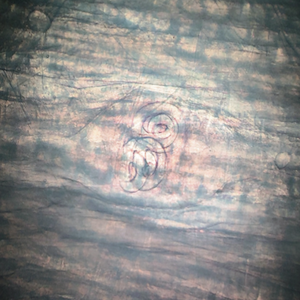 Smart Citations
Smart CitationsSee how this article has been cited at scite.ai
scite shows how a scientific paper has been cited by providing the context of the citation, a classification describing whether it supports, mentions, or contrasts the cited claim, and a label indicating in which section the citation was made.
Trichinella spp. detection in hunted wild boar (Sus scrofa) diaphragm biopsies in Central Italy
Trichinellosis is a globally diffused foodborne parasitic disease caused by nematodes of the Trichinella complex. During evolution, guided by ecological interactions, natural selection, and biochemical “intelligence”, these parasites developed admirable strategies to infect the host’s organism. One of the most fascinating is represented by the nurse cell formation in muscular tissue (e.g., diaphragm, skeletal muscle, extrinsic ocular muscles, etc.). This strategy allowed the parasite to adapt and conquer the wider host species spectrum, including ungulates and humans. Consumption of undercooked meat from infected wild ungulates constitutes the most important source of infection for the human species. In this study, we show the prevalence of Trichinella spp. in hunted wild boars (Sus scrofa) in Central Italy. During the hunting season 2021/2022 in the province of Rieti, 554 wild boar diaphragm biopsies were collected for Trichinella spp. screening, in accordance with Regulation EU 1375/2015. An artificial digestion method was used for the detection of Trichinella spp. larval forms. The results revealed a positivity of 0.18% (1/554), and molecular biology identification demonstrated the presence of Trichinella britovi in the positive sample. This species is the most diffused in wild ungulate populations in Central Italy and the most frequently isolated in human patients with trichinellosis from this area, showing a close epidemiological relation between Homo sapiens and Sus scrofa for Trichinella spp. diffusion in an ecosystem. Epidemiological surveillance, in receptive animal species destined for human consumption and at any One Health level, represents the main “winning” strategy in the control of this worldwide, widespread foodborne parasitic disease.
Downloads
How to Cite

This work is licensed under a Creative Commons Attribution-NonCommercial 4.0 International License.
PAGEPress has chosen to apply the Creative Commons Attribution NonCommercial 4.0 International License (CC BY-NC 4.0) to all manuscripts to be published.

 https://doi.org/10.4081/ijfs.2023.11467
https://doi.org/10.4081/ijfs.2023.11467





